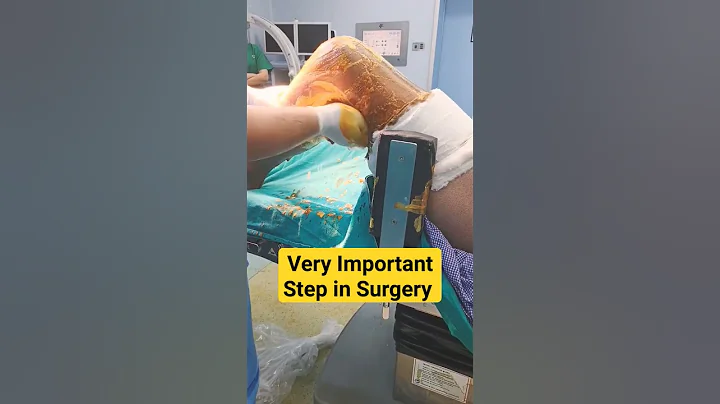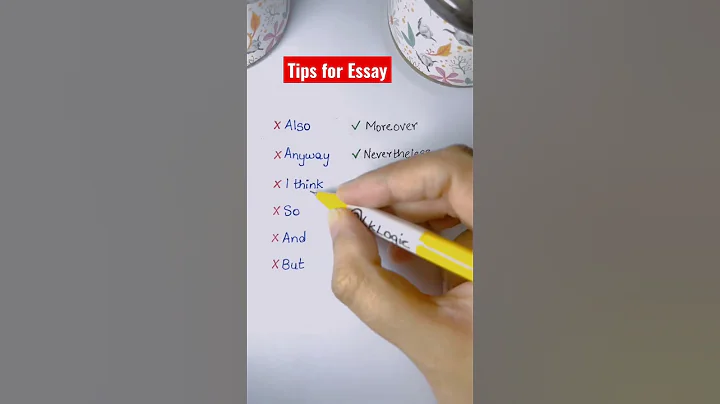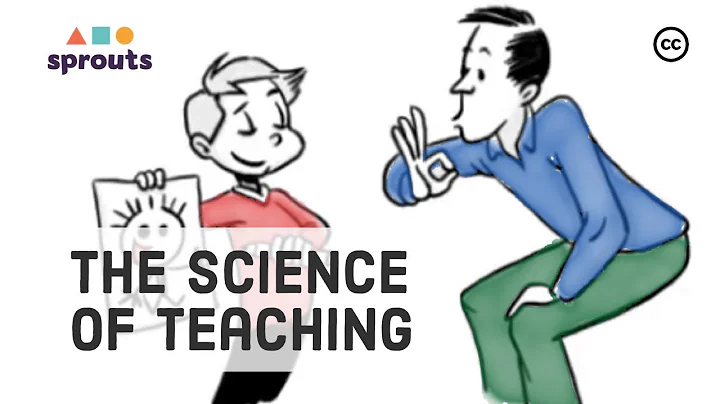
High school biology: summary of experimental knowledge, principle application and attention are explained one by one!
View more junior high school and high school knowledge, follow me, updated every day!















The 19 experiments in the textbooks specified in the high school examination syllabus can be divided into:
(1) Microscope observation experiments: one, three, four, six, ten, twelve;
(2) Exploratory experiments: seven, nine, thirteen, Fifteen, seventeen, and nineteen;
(3) confirmatory experiments: two and eight;
(4) simulation experiments: five, eleven, and sixteen;
(5) survey experiments: fourteen and eighteen.
Experiment 1 Observing the distribution of DNA and RNA in cells (compulsory course 1 P26)
1, principles, steps, conclusions

2, experimental precautions
(1) Material selection: oral epithelial cells or onion inner epidermal cells (colorless) [cannot be used Purple onion epidermal cells or mesophyll cells to prevent color interference]
(2) Slow water washing purpose: to prevent cells on the slide from being washed away.
(3) The role of several reagents in the experiment
① 0.9% NaCl solution (physiological saline): maintain the normal shape of oral epithelial cells.
② 8% hydrochloric acid: a. Change the permeability of the cell membrane and accelerate the entry of the dye into the cells; b. Separate the DNA and protein in the chromosome, which is conducive to staining.
③ Methyl green and pyrrole red dye: mixed and must be prepared and used immediately.
Experiment 2 Detection of reducing sugars, fats and proteins in biological tissues (compulsory course 1 P18)
1, experimental principles and procedures

2, experimental precautions
(1) Reducing sugar identification experimental material requirements: must be white or light-colored, and reducing sugar High content.
[Do not use green leaves, watermelon, blood and other materials to prevent color interference; do not use potatoes (containing starch), sugar cane, beet (containing sucrose). 】 The only heating required for
(2) is the identification of reducing sugar, and it must be heated by water bath . It cannot be heated directly with an alcohol lamp. If it is not heated, no brick-red precipitate will appear.
(3) non-reducing sugar (such as sucrose) + Fehling's reagent (water bath heating), the phenomenon is not colorless but light blue [the color of Cu(OH)2].
(4) The only thing that requires a microscope is fat identification. The experiment uses 50% alcohol to wash away the floating color.
(5) Fehling's reagent: it needs to be mixed and added, and it must be ready for use; Biuret reagent: it needs to be added separately (add solution A first, then add solution B).
Experiment 3 Use a microscope to observe a variety of cells (compulsory course 1 P7)
1. Use of microscopes

2. Precautions for using microscopes
First low and then high: first low power and then high power.
magnification: refers to the magnification of "length". The relationship between
lens and magnification: the shorter the eyepiece, the longer the objective lens, the closer the objective lens is to the glass, the greater the magnification.
3. Comparison of high- and low-magnification lenses

Experiment 4 Observing mitochondria and chloroplasts (Compulsory Course 1 P47)
1. Experimental principles
① Chloroplasts are green and do not need to be stained. They can be observed directly after making.
② Mitochondria need to be stained blue-green with Jenna green (a mitochondria-specific live cell dye) and then prepared for observation.
2, experimental materials
① Use mosses or spinach leaves to observe chloroplasts;
② Use human oral epithelial cells to observe mitochondria.
3. Attention issues
① The temporary mounting of films during the experiment should always be kept in a state of water.
② Choose fresh and black algae leaves: because the leaves are thin and small, with clear chloroplasts, the leaflets can be directly sliced;

Experiment 5 Explore the permeability of the membrane through simulation experiments (compulsory course 1 P60)
1. The composition of the osmotic system (as shown in the figure) and conditions
(1) semi-permeable membrane : It can be a biological membrane with selective permeability membrane, or it can be a physical filtration membrane.
(2) The solution on both sides of the membrane has a concentration difference: it refers to the quantity concentration of the substance, not the mass concentration.
2. Notes
① The direction of movement of water molecules: It can move in both directions, but overall the water molecules move from low concentration to high concentration.
②After reaching the osmotic equilibrium, as long as there is a liquid level difference Δh, the concentration of the S1 solution is still greater than the concentration of the S2 solution.
③ If S1 is a 10% sucrose solution and S2 is a 10% glucose solution (if neither can pass through the semipermeable membrane), the water molecules will enter the beaker from the funnel and the liquid level of the funnel will drop.
Experiment 6 Observation of plasmolysis of plant cells and recovery (compulsory course 1 P61)
1. Principle: Mature plant cells constitute an osmotic system

2. Process

3. Conditions for plasmolysis to occur
Living plant cells, large Analysis of the causes of vacuoles, concentration difference
4, and plasmolysis
external factors: external solution concentration > cell fluid concentration;
internal factors: the protoplasm layer is equivalent to a semipermeable membrane, and the cell wall is less stretchable than the protoplasm layer;
performance: the vacuole is composed of The size becomes smaller, the color of the cell fluid changes from light to dark, and the protoplasm layer and the cell wall gradually separate.
5, special reminder
(1) Plant cells with large vacuoles and color must be selected to facilitate observation under a microscope.
(2) If a 50% sucrose solution is used for experiments, plasmolysis can occur but cannot be restored because the cells will die due to excessive water loss.
(3) If urea, KNO3 and other solutions are used, automatic recovery will occur.
Experiment 7 explores the factors affecting enzyme activity (compulsory course 1 P78)
1. Enzyme efficiency - comparing the decomposition of hydrogen peroxide under different conditions
(1) Analysis of the experimental process

(2) Experimental precautions
Must be used during the experiment Use fresh liver as experimental material. If it is not fresh, catalase and other organic matter in the cells may be inactivated by bacteria.
2. Enzyme specificity
The independent variable in this experimental investigation can be different reactants or different types of enzymes; the dependent variable is whether the reactants are decomposed.


3. Explore the effect of temperature on enzyme activity

(1) Experimental process analysis
(2) Experimental precautions
① Since catalase will decompose when heated, hydrogen peroxide cannot be used as a substrate.
② Since Fehling's reagent needs to be heated when used, iodine solution is used to detect the dependent variable.
4. Exploring the effect of pH on enzyme activity
Thinking: Why can’t amylase be used as a substrate in experiments to explore pH?
answer: Because starch will decompose under acidic conditions, this will interfere with determining whether amylase
can hydrolyze starch. Therefore it cannot be used.
Experiment 8 Extraction and separation of chloroplast pigments (compulsory course 1 P97)
1. Principle of pigment extraction
Pigments can be dissolved in organic solvents such as absolute ethanol.
2. Principle of pigment separation
Each pigment diffuses at different speeds with the chromatographic liquid on the filter paper, thereby separating the pigments.
[High solubility means fast diffusion; low solubility means slow diffusion. 】
3, the role of each substance:
absolute ethanol: dissolve and extract pigments;
chromatography: separate pigments;
silicon dioxide: make grinding sufficient;
calcium carbonate: neutralize the organic acids released when the vacuole is damaged, and prevent pigments Molecules are destroyed.
4, the separation result
filter paper strips are "Hu Huang ab" from top to bottom.[The width of the pigment band is related to the pigment content]
Experiment 9 explores the respiration mode of yeast (compulsory course 1 P91)
1, principle
Aerobic conditions: C6H12O6 + 6O2 + 6H2O6 → CO2 + 12H2O + energy
Anaerobic conditions: C6H12O6 → 2C2H5OH + 2CO2 + A small amount Energy
2, detection
(1) Detect the production of CO2: make the clear lime water become turbid, or make the bromothymol blue aqueous solution change from blue to green and then to yellow.
(2) Detect the production of alcohol: The orange potassium dichromate solution reacts with alcohol under acidic conditions and turns gray-green.
Experiment 10 Observing cell mitosis (compulsory course 1 P115)
1, Materials
Onion root tip (or onion, garlic)
2, Steps
(1) Culture of onion root tips
(2) Production process of mounting slices: Solution Dissociate (dissociation solution) → rinse (wash with water for 3 minutes) → stain (gentian violet or acetate magenta) → make a film
3 and observe
(1) First find the cells in the root apical meristematic zone under a low power microscope: the cells are square , arranged tightly, and some cells are dividing.
(2) Observe under a high-power microscope: the number of cells in interphase is the largest.
4. Attention issues
(1) Why can only the tip of each root be used? When is the best time to remove the root tip? Why? Answer: Because the cells in the root tip meristem zone can undergo mitosis; from 10 am to 2 pm; because cell division is active at this time.
(2) What are the purposes of dissociation and tableting? Why do we need to add another slide when pressing?
Answer: The purpose of dissociation and slicing is to separate cells from each other; adding a slide is to prevent the coverslip from being crushed.
(3) What is the role of hydrochloric acid during the dissociation process?
Answer: Break down and dissolve the intercellular substance.
(4) Why do you need to rinse?
Answer: Wash away the hydrochloric acid to facilitate dyeing.
(5) Why do we need to find the meristematic area? What are the characteristics of meristematic zones?
Answer: Because only the cells in the meristematic zone at the root tip can undergo cell division;
The characteristics of the meristematic zone are that the cells are square and closely arranged.
(5) Can the cells observed change from metaphase to anaphase?
Answer: No, because the cells were already dead when observed and only stayed for a certain period of time.
(6) Can chromosomes be seen when observing onion epidermal cells? Why?
Answer: No, because onion epidermal cells can no longer divide.
(8) If the chromosomes cannot be seen during observation, what are the possible reasons?
Answer: No cells in the meristematic zone were found; no cells in the dividing phase were found; the staining solution was too thin; the staining time was too short, etc.
Experiment 11 The relationship between cell size and material transport (compulsory course 1 P110)
[Simulation to explore the relationship between cell surface area and volume]
1. Experimental principle
Use agar blocks to simulate cells. The agar blocks contain phenolphthalein, which turns purple when it meets NaOH. Red, shows the diffusion rate of the substance (NaOH) in the agar block.
2. Conclusion
The ratio of surface area to volume of agar block decreases with the increase of agar block;
The ratio of the volume of NaOH diffusion to the volume of the entire agar block decreases with the increase of agar block.
Experiment 12 Observing cell meiosis (compulsory course 2 P21)
1, method steps
Low power microscope observation → High power microscope observation → Drawing
2, Discussion
(1) How to judge whether a cell in the field of view is in the minutiae Split once or reduce and split a second time?
Answer: The first division of meiosis will result in the synapsis of homologous chromosomes , the formation of tetrads, the homologous chromosomes arranged in pairs at the equatorial plate position, the separation of homologous chromosomes, and the chromosomes moving to the two poles of the cell. Phenomenon such as the formation of two chromatids and ; during the metaphase of the second meiotic division, non-homologous chromosomes are arranged in single rows at the equatorial plate of the cell, and the chromosomes that move to the poles of the cell do not contain chromatids.
(2) Compared with the second meiosis division, what are the differences between the chromosomes in metaphase cells? What about the end?
Answer: During the metaphase of the first division of meiosis, two homologous chromosomes are arranged on both sides of the equatorial plate of the cell. The chromosomes at the poles of the cell at the end of the cell are composed of a complete set of non-homologous chromosomes of the cell, and their number is the number of somatic chromosomes. Half of the number, each chromosome is composed of two chromatids; during the metaphase of the second meiosis division, the centromeres of all chromosomes are arranged at the equatorial plate of the cell. The chromosomes at the poles of the telophase cell do not contain chromatids.
Experiment 13 Low temperature induces chromosome doubling (compulsory course 2 P88)
1. Principle
Low temperature can inhibit the formation of spindle, so that the cell cannot divide into two daughter cells, causing the number of chromosomes in the cell to double.
2, method steps
(1) When the onion grows adventitious roots of about 1cm, place it in the low temperature chamber of the refrigerator (4°C) and induce culture for 36 hours.
(2) Take about 0.5-1cm of the root tip, soak it in Carnoy's solution for 0.5-1h, fix the cell shape, and then rinse it twice with 95% alcohol.
(3) Production and mounting: dissociation → rinsing → staining → production
(4) Observation and comparison: There are both normal diploid cells and cells with altered chromosome numbers in the field of view.
3, Discussion
Both colchicine and low temperature can induce the doubling of chromosome number. What are the similarities in principle between these two methods?
Answer: Both colchicine and low temperature can induce the doubling of the number of chromosomes. The principle is to inhibit the formation of the spindle, preventing the chromosomes from moving to the poles of the cell, thus causing the doubling of the number of chromosomes in the cell.
Experiment 14 Investigate common human genetic diseases (compulsory course 2 P91)
1. It is required that the group to be investigated by
is large enough; select single-gene genetic diseases with a high incidence rate in the group. [Such as red-green blindness, albinism, high myopia, etc.]
2, calculation formula

Experiment 15 explores the effect of plant growth regulators on the rooting of cutting branches (compulsory course three P51)
1, commonly used auxin analog
α-naphthyl acetic acid (NAA) ), 2,4-D, phenylacetic acid (IPA), indolebutyric acid (IBA)
2, method
soaking method: The concentration of the solution is required to be low, and it is best to be in a place with shade and high air humidity. for processing.
Dip method: Dip the base of the cutting in a higher concentration of medicinal solution (about 5 seconds) to a depth of about 1.5cm.
3, pre-experiment
first design a set of experiments with a large concentration gradient for exploration, and then design detailed experiments on this basis.
4. Control irrelevant variables
. For example, the processing time should be consistent, and the plant materials used should be in the same conditions as much as possible.
Experiment 16 Simulated urine sugar detection
1. Sampling
urine of normal people and urine of diabetic patients
2. Detection method
Fehling reagent (water bath heating)
3. Results
Brick red precipitate in the test tube is diabetes. The patient's urine without brick-red precipitate is the urine of a normal person.
Experiment 17 explores the dynamic changes in the number of yeasts in culture medium (Compulsory Course Three P68)
1. Experimental Principle
(1) Yeast can be cultured in liquid culture medium. Its growth depends on the components and space in the culture medium. , pH, temperature and other factors.
(2) uses a hemocytometer to count directly under a microscope.
[Because it cannot distinguish between live bacteria and dead bacteria, the statistical results will be high]
2. Precautions
① How to count yeast?
adopts the sampling detection method: first place the cover glass on the counting chamber, use a pipette to absorb the culture medium, drop it on the edge of the cover glass, let the culture liquid seep in by itself, absorb the excess culture liquid with filter paper, wait until the yeast cells All settle to the bottom of the counting chamber, count the number of yeasts in a small square, and then use this as a basis to estimate the total number of yeasts in the test tube.
② Shake the test tube gently several times before absorbing the culture medium for counting. The purpose is to evenly distribute the yeast in the culture medium and reduce errors;
③ If there are too many yeasts in a small square and it is difficult to count, what should be done? measure? Answer: Increase the dilution factor
Experiment 18 Research on the richness of animal groups in soil (compulsory course three P75)
1, method
sampler sampling method.
2. Using insect traps to collect
takes advantage of the characteristics of small soil animals that tend to be dark, moist, and avoid high temperatures.
3. There are two statistical methods for richness.
One is the naming calculation method; the other is the visual estimation method.
Experiment 19: Explore the succession of communities in aquariums (or fish tanks) (Compulsory Course 3 P68)
1. Experiment purpose
Explore the succession process of biological communities.
2. Experimental requirements
(1) The aquarium must be sealed and transparent, and placed indoors in a well-ventilated and well-lit place, but avoid direct sunlight.
(2) Composition: non-biological components, producers, consumers and decomposers
(3) The quantity of each biological component should not be too much to avoid damaging the food chain
Biology Master





















